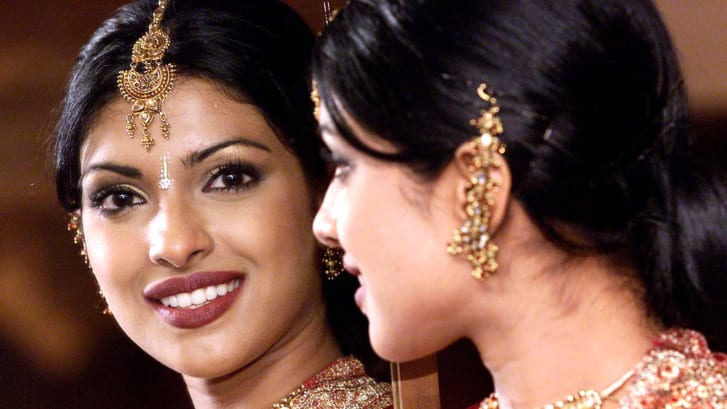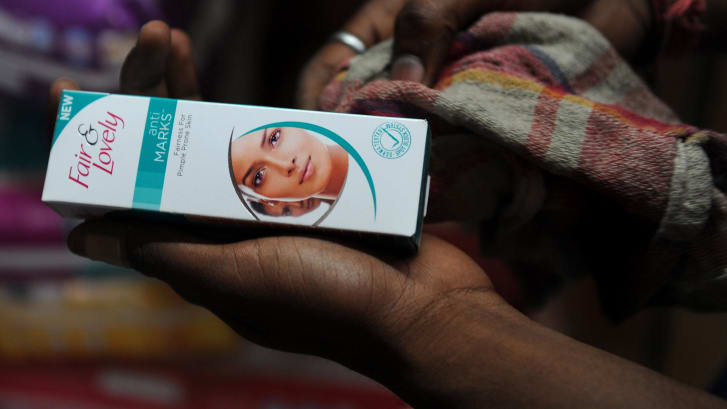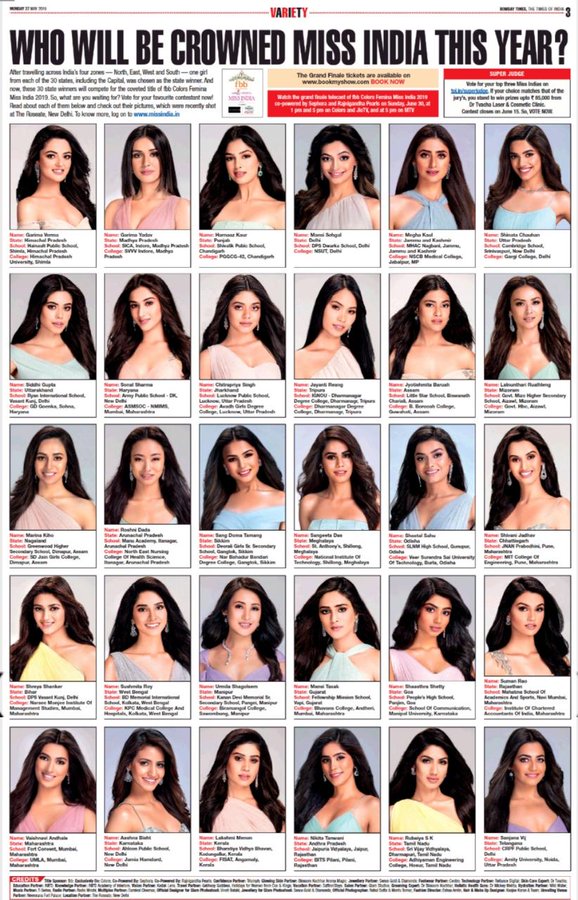what began as an innocent collage of this year’s Miss India finalists has evolved into a heated social media debate about India’s obsession with fair skin.
The image, published in the Times of India newspaper, had 30 head-shots of glossy-haired finalists who all appeared to share the same fair skin tone.
In a country with 1.3 billion people, hundreds of languages and myriad ethnic groups, Twitter users suggested that beauty pageant organizers were only choosing contestants that perpetuate Eurocentric beauty ideals.
“They all have the same hair, and the SAME SKIN COLOUR, and I’m going to hazard a guess that their heights and vital stats will also be similar,” another Twitter user Prasanna
The controversy around the Times of India’s photograph, however, highlighted a sensitive issue in India, where Miss India is a huge cultural event.
The competition helped to launch the careers of actress Priyanka Chopra and Bollywood icon Aishwarya Rai, and has become a beacon of national pride when winners go on to bring home international titles, such as Miss World.
The winner of Miss India titles are typically “groomed for the global beauty stage,” said Radhika Parameswaran, a professor at Indiana University’s Media School. “There is a perception they have to emulate Western beauty standards to win.”
The organizers of Miss India declined to comment.
The fact that India has won the Miss World contest six times could have convinced pageant organizers to stick to a type, says Kavitha Emmanuel, founder of the Indian NGO Women of Worth, which campaigns for gender equality and against the bias toward lighter skin.
The infatuation with fairness now goes much deeper than pageants. “It is a toxic belief that has become part of our culture,” Emmanuel explained.
Parameswaran is currently researching the backlash against colorism, a term that means “a form of skin color stratification and skin color discrimination that assigns lighter-skinned individuals and particularly women greater worth and value.” It’s an issue, she said, that is very much alive in India.
“Colorism and racism are Siamese twins and cannot be separated,” she added.
National obsession
The obsession with fairness can begin before a baby is even born in some parts of India, with some pregnant Indian women drinking saffron-infused milk to make their infant’s skin fairer. Others avoid iron supplements in the misplaced belief it will make their unborn child darker. These practices, however, have become far less common in areas where wealth and education levels have improved.
“We still have matrimonial adverts in newspaper which say, ‘wanted: fair, slim brides,'” Emmanuel said.
It is a problem that primarily affects women, as men’s financial worth is generally deemed more important than their beauty. “Women’s bodies are their currency,” Parameswaran said.
Cosmetic brands globally have profited from the insecurity, cashing in on a multi-million dollar industry of creams, skin bleaches and invasive procedures that promise to lighten skin. The demand for whiteners is projected to reach $31 billion by 2024, up from $18 billion in 2017, especially in Asia, the Middle East and Africa, according to market intelligence firm Global Industry Analysts. Routine skin whitener use ranges from 25% in Mali to 77% in Nigeria, and it’s 40% in China, Malaysia, the Philippines and South Korea, according to the World Health Organization.
“Very little of the world is untouched by colorism,” Parameswaran said.
A 2017 study found that more than half of 1,992 men and women surveyed about product use in India had tried skin whiteners and close to half (44.6%) felt the need to try such products due to media such as TV and advertisements.

Priyanka Chopra won Miss World when she was 18 years old.
The country’s enduring legacy of caste is often credited as a root cause of the problem, with those from the lower caste group, known as the Dalits, being associated with darker skin, Parameswaran said.
“That is because caste is an occupational-based hierarchy with the lowest of the caste being assigned the tasks of manual labor,” she added, which is often outdoor work. The Dalits are discriminated against as being “unclean,”are considered untouchable by the higher castes, which are associated with fairness.
There are also regional differences, especially between North and South India, at play as well.
Both Parameswaran and Emmanuel said the obsession with fair skin could lead to a range of socio-economic problems, including low self worth and mental health issues, as well as have an impact on job and marriage prospects.
“A small survey we did found children are affected the most,” Emmanuel said, adding that some three-year-olds were being told they were “not fair enough” at school.
International reach

The demand for whiteners is climbing and is projected to be worth more than $30 billion in the next five years.
Within this landscape, there voices pushing for change. Emmanuel founded the Dark is Beautiful campaign, which includes advocacy programs to address color bias and has been endorsed by Bollywood actor Nandita Das.
In a series of posts in 2017, another Bollywood star, Abhay Deol, called out his fellow actors for endorsing skin-whitening brands. Since then, a number of Instagram influencers and brands have jumped on the inclusivity bandwagon.
“There is no one face that represents India,” Anushka Kelkar, the 22-year-old photographer behind the Instagram account browngirlgazin, which won plaudits for its honest portrayal of Indian women from different backgrounds.
“I have friends from Kashmir who are asked if they are Indian and friends from Kerala who have been asked if they are African. People look different and it is time we started embracing that,” she said.
But the fact there is a conversation about color bias in India means things are moving forward, Kelkar added.
Still, Emmanuel and Parameswaran said they believe the country is a long way off real change. “We need a paradigm shift in the way we think about what people look like,” Emmanuel said.
“Indians have not only misrepresented what Indians should look like to themselves, they have misinterpreted Indians to the rest of the world,” Emmanuel added. “We have not represented our country well.”




